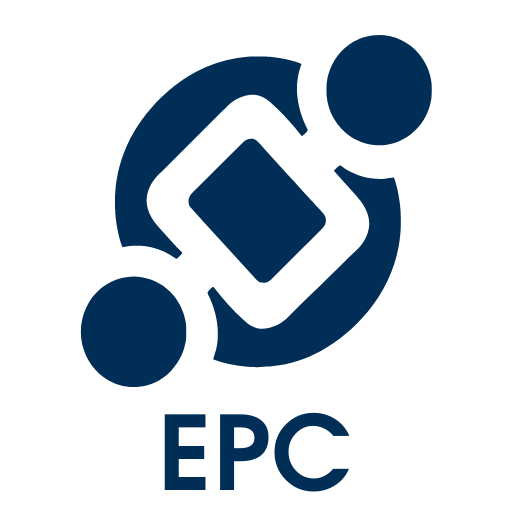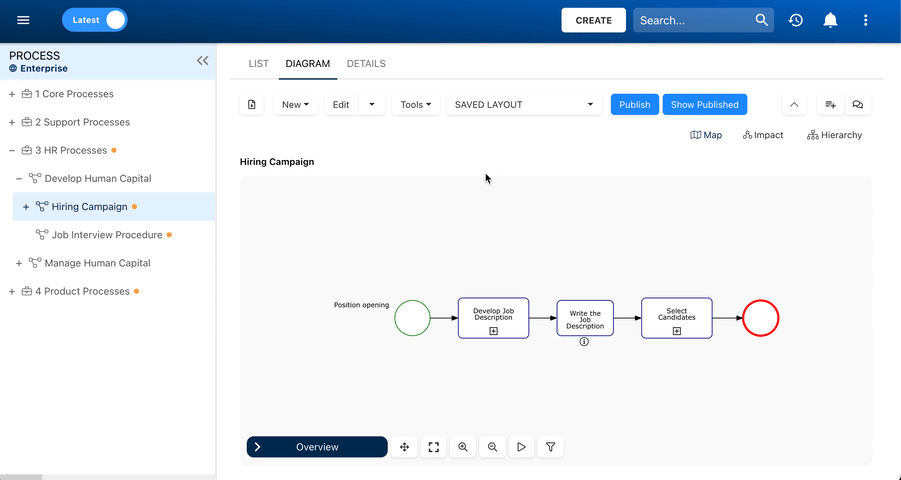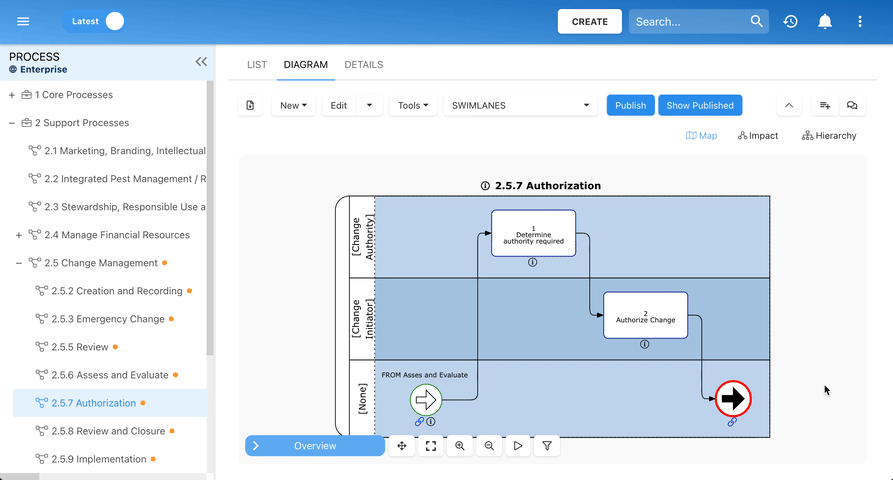This guide is designed to provide you with practical insights into maximizing the capabilities of EPC’s AI for process improvement.
In this guide, we will delve into the AI process improvement, providing insights on how to get started, effectively utilize this feature, and offer basic use cases and example prompts to guide your interactions with the AI.
Introduction to Process Improvement Feature
Enhance your organizational processes by identifying gaps, inefficiencies, and errors within your existing workflows with the Process Improvement feature. This versatile tool enables organizations to analyze their processes effortlessly and receive tailored suggestions for optimization. Users also have the option to directly interact with the AI, making specific changes with ease.
Getting Started
Before using the Process Improvement feature, ensure that the AI capabilities have been configured by your System Administrator. To learn how to configure the AI, please refer to this guide.
How to Use the AI Process Improvement
Users can choose between two actions, either ‘Suggest Improvements’ or ‘Write Improvements’
Suggest Improvements
This option enables the AI to analyze your processes and suggest relevant improvements that can be implemented instantly.
How it works
- Navigate to the desired process.
- Click on the ‘Tools’ menu
- Select ‘Suggest Improvements’
- The AI will review the entire process and identify areas of improvement.
- At this step, users have the ability to modify the proposed changes if needed, like deleting or rewording a proposition.
- Click ‘Execute’ to implement the changes.
Write Improvements
This option empowers users to input their desired changes, and the AI will implement these changes automatically.
How it works
- Navigate to the desired process.
- Click on the ‘Tools’ menu
- Select ‘Write Improvements’
- Input your custom request in the text box provided. Refer to the following use cases and example prompts for guidance on what to write.
- Click ‘Execute’ to initiate the changes.
Use Cases and Example Prompts
Below, we present basic examples of actions that users can request from the AI. These examples serve as foundational building blocks for users to initiate various adjustments and modifications to their processes.
| Action | Example Prompts |
|---|---|
| Add a Flow Object |
|
| Add a Lane |
|
| Add a Role/Resource |
|
| Change Task Name |
|
| Change/Add Flow Objects Responsible Role/Resource |
|
| Delete a Flow Object |
|
| Delete ALL Flow Objects |
|
| Delete a Role |
|
| Move a Task |
|
| Replace Role |
|
Users also have the capability to request operational enhancements tailored to their specific requirements or compliance needs. Whether aligning with industry standards like ISO or regulatory frameworks such as HIPAA, users can prompt the AI to implement precise adjustments ensuring process compliance and optimization.
Here are a couple of examples:
| Category | Example Prompts |
|---|---|
| Compliance |
|
| Operational Efficiency |
|
| Customer Experience |
|
| Risk Management |
|
| Training and Development |
|
| Stakeholder Engagement |
|
Need more help with this?
Visit the Support Portal




